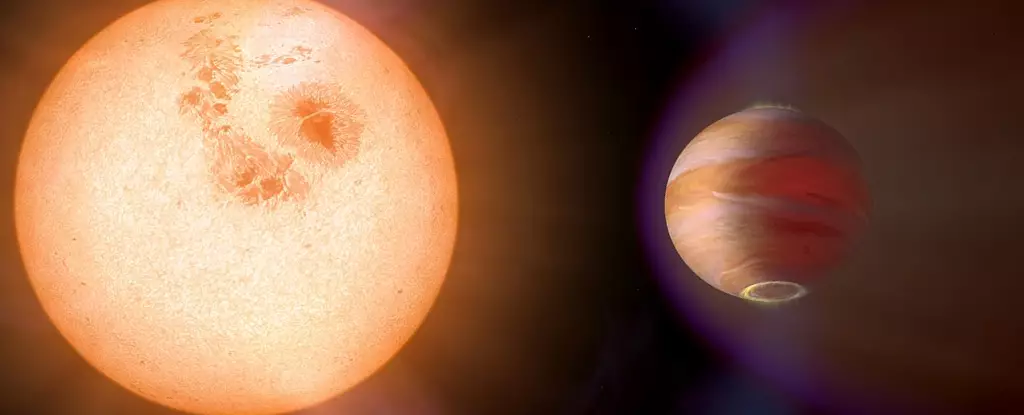In the infinite expanse of the universe, understanding the chemical composition of stars has become a pivotal aspect of modern astronomy. Within recent decades, advancements in astronomical techniques have allowed researchers to measure the metallicity of stars with remarkable precision. By studying the metallic compositions of co-natal stars—those formed within the same giant molecular cloud—scientists have often assumed that these stars would exhibit strikingly similar metallicities. However, new research introduces a fascinating twist to this expectation, suggesting that the engulfment of rocky planets plays a crucial role in creating significant variations in stellar metallicity.
Co-natal stars are birthed in the same environment, undergoing similar formative processes that would typically lead them to share comparable chemical applications. That said, the reality is rarely so straightforward. Giant molecular clouds where stars are conceived are not completely homogeneous; small variations in metallicity are expected. Nevertheless, when marked differences arise between sibling stars, deeper investigations become necessary to find the underlying causes.
Recent studies, especially one led by Christopher E. O’Connor from Northwestern University and Dong Lai from Cornell University, have pointed to a striking phenomenon that could clarify these disparities: the pollution of stars by rocky planets. Such pollution poses fascinating questions about the life cycles of exoplanets and their eventual fate in relation to their parent stars.
The pollutants of interest here are ultra-short-period (USP) exoplanets, which orbit their stars at blistering speeds—completing their revolutions in mere hours. Despite their rarity—found around only 0.5 percent of Sun-like stars—these planets contain high concentrations of metal-rich materials akin to Earth. The exact origins of these planets remain ambiguous, leading to theories ranging from migration from further out in the solar system to the remains of larger planets stripped of their atmospheres due to intense stellar radiation.
As O’Connor and Lai suggest, the engulfment of these rocky planets into their host stars could explain the pronounced differences in metallicity observed among co-natal stars. The destruction of these planets is not merely a theoretical construct; it reflects a reality in which between 3 to 30 percent of co-natal stars are likely to consume rocky planets weighing between one and ten Earth masses.
Mechanisms of Engulfment
To better understand the star-planet dynamics, the researchers proposed several mechanisms that lead to the engulfment of these rocky worlds. One possibility involves high-eccentricity migration when a planet experiences a gravitational pull that decreases its orbit’s eccentricity until it reaches a circular path too close to the star, ultimately leading to its destruction.
A related idea is the obliquity-driven migration mechanism, which suggests that interactions with other planetary bodies can significantly alter a planet’s trajectory, hastening its eventual engulfment. It appears that the fate of these planets is tied to the complex inspirational dance within their respective solar systems, pointing to a highly dynamic evolutionary process that governs the life cycles of both stars and their orbiting planets.
Through sophisticated modeling, O’Connor and Lai demonstrated a potential correlation between pollution and the compact multi-planet systems surrounding Sun-like stars. Their findings suggest that the engulfment of USPs tends to occur within a one-gigayear timeframe post-formation. Strikingly, their model also indicates that polluted stars might often host transiting planets with small mass and shorter orbital periods.
However, the implications of their research extend beyond confirming existing models; they also raise questions about the accuracy of current understandings of stellar metallicity. One caveat highlighted in their findings is that metallic pollution may not endure indefinitely. Metals may settle within the stars, obscuring the evidence of previous engulfment events, potentially leading astronomers to underestimate the extent of pollution affecting Sun-like stars.
While the research presents tantalizing insights, O’Connor and Lai acknowledge that numerous mysteries remain, especially concerning potential disruptive influences from larger planets, particularly Hot Jupiters. These gas giants, characterized by their close orbits and gravitational interactions, might also influence stellar pollution, though concrete conclusions about their impacts remain elusive. The authors assert that further studies are necessary to ascertain the roles played by various planetary bodies in contributing to stellar composition.
As investigations continue into the complex interactions between stars and their surrounding planets, the threads of theory and observation are slowly weaving a richer tapestry of understanding. These evolving insights not only illuminate the life cycles of stars and planets alike but also beckon future research aimed at exploring how these celestial phenomena influence one another on cosmic scales. The inquiry into stellar pollution through planetary engulfment signifies an exciting frontier in astrophysical research, promising to unveil the intricacies of our universe, challenging preconceived notions, and enhancing our understanding of cosmic evolution.


Leave a Reply